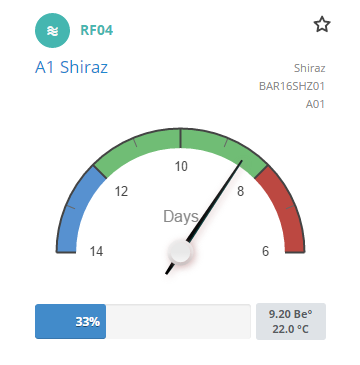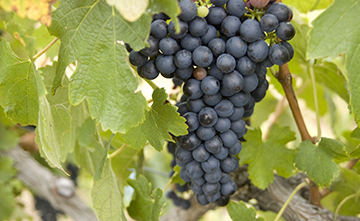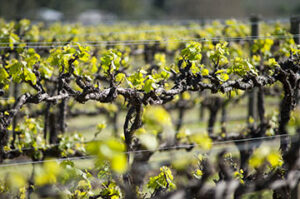Order the latest AWRI staff publications online
Accessing the latest AWRI publications is easy. Visit the AWRI Publications web page to:
- View the 10 most recent AWRI staff publications and order the articles online from the AWRI Library
- Search the staff publications database
- Read the full-text of ‘Technical Notes’ from Technical Review (PDF format)
- Read the full-text of ‘AWRI reports’ published in Wine & Viticulture Journal (PDF format).
A full list of AWRI publications published since the last eNews is included below:
1847 Barrett-Connor, E., de Gaetano, G., Djoussé, L., Ellison R.C., Estruch, R., Finkel, H., Goldfinger, T., Keil, U., Lanzmann-Pettithory, D., Mattivi, F., Skovenborg, E., Stockley, C., Svilaas, A., Teissedre, P-L., Thelle, D.S. Correspondence: Comments on moderate alcohol consumption and mortality. J. Stud. Alcohol Drugs 77 (5): 834-836; 2016.
1848 Hixson, J.L., Jacobs, J.L., Wilkes, E.N., Smith, P.A. A survey of the variation in grape marc condensed tannin composition and concentration, and analysis of key compositional factors. J. Agric. Food Chem. DOI: 10.1021/acs.jafc.6b03126; 2016.
1849 Bindon, K. A., Li, S., Kassara, S., Smith, P.A. The retention of proanthocyanidin in wine-like solution is conferred by a dynamic interaction between soluble and insoluble grape cell wall components. J. Agric. Food Chem. DOI: 10.1021/acs.jafc.6b02900; 2016.
1850 Bekker, M.Z., Smith, M.E., Smith, P.A., Wilkes, E.N. Formation of hydrogen sulfide in wine: interactions between copper and sulfur dioxide. Molecules 21 (1214): 1-17; 2016.
1851 Mierczynska-Vasilev, A., Smith, P. A. Surface modification influencing adsorption of red wine constituents: The role of functional groups. Appl. Surf. Sci. 386: 14-23; 2016.
1852 Christo, S. N., Bachhuka, A., Diener, K. R., Mierczynska, A., Hayball, J. D., Vasilev, K. The role of surface nanotopography and chemistry on primary neutrophil and macrophage cellular responses. Adv. Healthcare Mater. 5 (8): 956-965; 2016.
1853 Ramiasa-MacGregor, M., Mierczynska, A., Sedev, R., Vasilev, K. Tuning and predicting the wetting of nanoengineered material surface Nanoscale 8 (8): 4635-4642; 2016.
1854 Mierczynski, P., Mierczynska, A., Maniukiewicz, W., Maniecki, T. P., Vasilev, K. MWCNTs as a catalyst in oxy-steam reforming of methanol. RSC Adv. 6 (84): 81408-81413; 2016.
1855 Mierczynski, P., Vasilev, K., Mierczynska, A., Ciesielski, R., Maniukiewicz, W., Rogowski, J., Szynkowska, I. M., Trifonov, A. Y., Dubkov, S. V., Gromov, D., Maniecki, T. P. The effect of gold on modern bimetallic Au-Cu/MWCNT catalysts for oxy-steam reforming of methanol. Catal. Sci. Technol. 6 (12): 4168-4183; 2016.
1856 Delalat, B., Mierczynska, A., Ghaemi, S. R., Vasilev, K., Voelcker, N. H. Materials displaying neural growth factor gradients and applications in neural differentiation of embryoid body cells. Adv. Funct. Mater. 25 (18): 2737-2744; 2015.
1857 Ramiasa, M. N., Cavallaro, A. A., Mierczynska, A., Hayball, J. D., Vasilev, K. Plasma polymerised polyoxazoline thin films for biomedical applications. Chem. Comm. 51 (20): 4279-4282; 2015.
1858 Zenoni, S., Fasoli, M., Guzzo, F., Dal Santo, S., Amato, A., Anesi, A., Commisso, M., Herderich, M., Ceoldo, S., Avesani, L., Pezzotti, M., Battista Tornielli, G. Disclosing the molecular basis of the postharvest life of berry in different grapevine genotypes. Plant Physiol. DOI:10.1104/pp.16.00865; 2016.
1859 Longbottom, M. ASVO prepares for November Awards night following ‘one of the best conferences ever’. Wine Vitic. J. 31 (5): p. 10; 2016.
1860 Cordente, T., Solomon, M., Godden, P., Curtin, C., Johnson, D. A rose by any other name: novel wine yeast that impart floral aromas. Wine Vitic. J. 31 (5): 39-40; 2016.
1861 Dry, P. Fiano. Wine Vitic. J. 31 (5): p. 59; 2016.
1862 Holdstock, M. Ask the AWRI: Calcium and its predictable presence. Aust. N.Z. Grapegrower Winemaker (632): 68-69; 2016.
1863 Coulter, A., Cowey, G., Petrie, P., Essling, M., Holdstock, M., Stockley, C., Simos, C., Johnson, D. Vintage 2016 – observations from the AWRI helpdesk. Wine Vitic. J. 31 (4): 43-45; 2016.
1864 Wilkes, E. AWRI research: Honest wine. WBM (September/October): 32-34; 2016.
1865 Parker, M., Black, C., Pearson, W., Barker, A., Francis, L., Herderich, M. I Glicosidi contribuiscono al rilascio di aroma in bocca. OICCE Times 68 (17): 15-18; 2016.
1866 Geffroy, O., Siebert, T., Silvano, A., Herderich, M. Impact of winemaking techniques on classical enological parameters and Rotundone in red wine at the laboratory scale. Am. J. Enol. Vitic. doi: 10.5344/ajev.2016.16060; 2016.
1867 Dry, P. Kerner. Wine Vitic. J. 31 (4): p. 59; 2016.
1868 Essling, M. Ask the AWRI: Re-entry periods after vineyard sprays. Aust. N.Z. Grapegrower Winemaker (633): p. 54; 2016.
1869 Caravia, L., Collins, C., Petrie, P.R., Tyerman, S.D. Application of shade treatments during Shiraz berry ripening to reduce the impact of high temperature.
Aust. J. Grape Wine Res. 22 (3): 422-437; 2016.
1870 Phogat, V., Skewes, M.A., McCarthy, M.G., Cox, J.W., Šimůnek, J., Petrie, P.R. Evaluation of crop coefficients, water productivity, and water balance components for wine grapes irrigated at different deficit levels by a sub-surface drip. Agr. Water Manag. 180 (Part A): 22-34; 2017.
1871 Stamatopoulos, P., Brohan, E., Prevost, C., Siebert, T.E., Herderich, M., Darriet, P. Influence of chirality of lactones on the perception of some typical fruity notes through perceptual interaction phenomena in Bordeaux dessert wines. J. Agric. Food Chem. 64 (43): 8160-8167; 2016.
1872 Varela, C. The impact of non-Saccharomyces yeasts in the production of alcoholic beverages. Appl. Microbiol. Biotechnol. doi: 10.1007/s00253-016-7941-6; 2016. |















